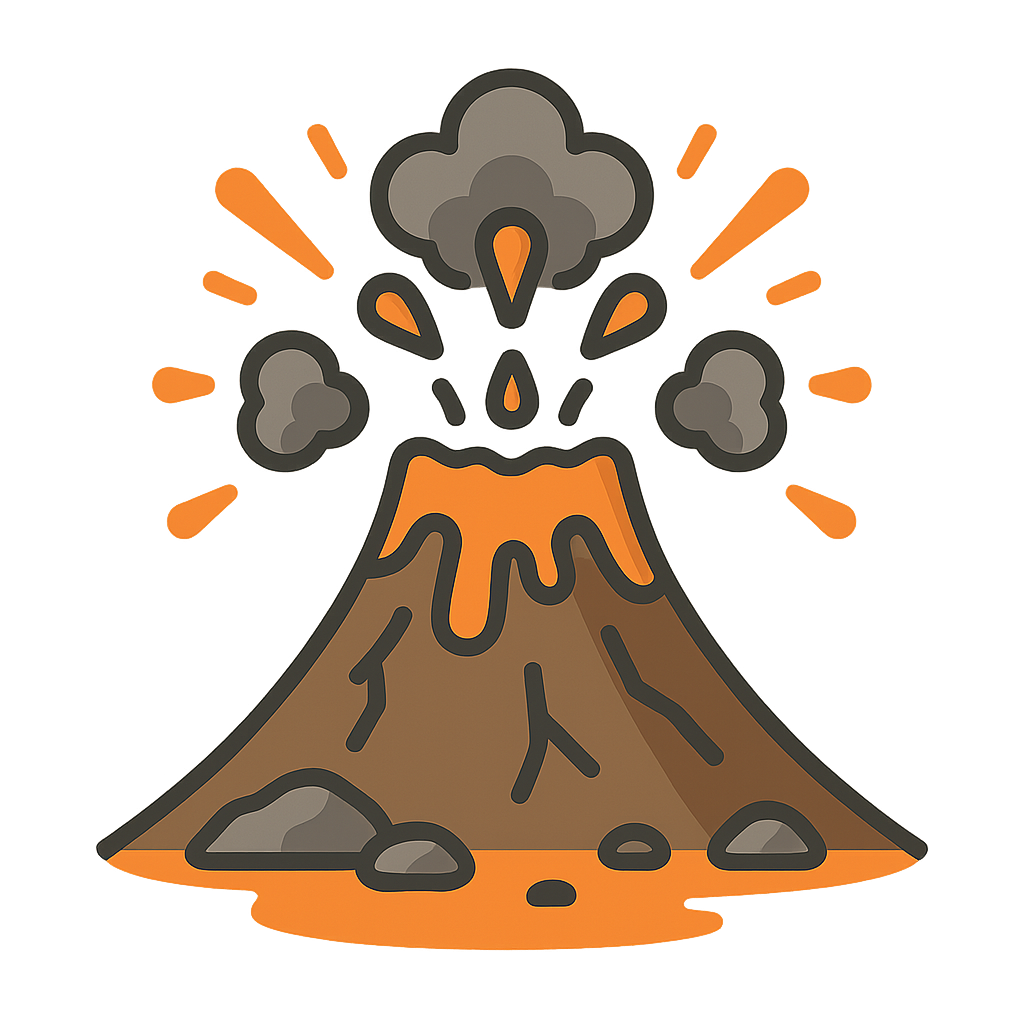The Mountain with a Fiery Heart
For centuries, I can lie perfectly still, a silent giant touching the clouds. People climb my rugged slopes, marveling at the forests that cling to my sides and the blanket of snow that crowns my peak in winter. They see me as a symbol of permanence, of unmoving strength. But deep beneath the stone and soil, a secret boils. An immense pressure builds within the Earth’s crust, a heat so intense it melts rock into a thick, glowing liquid. This molten heart beats with a slow, powerful rhythm, a silent promise of change that grows over years, decades, and even millennia. Sometimes, I give hints of the power I hold. The ground might tremble with a low, deep rumble, a sigh from far below. Steam may begin to whisper from cracks near my summit, like warm breath on a cold day. These are the first signs that I am stirring from a long slumber. I am the place where the world beneath your feet reveals its awesome, fiery nature. You call me a Volcano, and I am the Earth's way of showing you its incredible, creative power.
Long before your science had names for magma chambers and tectonic plates, people felt my power and tried to understand it through stories. They looked at my smoking peak and imagined something magnificent and divine at work. In ancient Rome, they believed a mighty god lived inside me. His name was Vulcan, the master blacksmith for all the other gods. They imagined the tremors they felt were the pounding of his enormous hammer as he forged lightning bolts for Jupiter, and the glowing lava that spilled from my summit was the fire from his forge. It is from him, Vulcan, that you gave me my name. Far across the Pacific Ocean, the people of Hawaii saw me as the home of Pele, the powerful and passionate goddess of fire. Her moods, they believed, determined whether I would rest peacefully or erupt with rivers of fire that reshaped their islands. One of my most famous and tragic moments came on August 24th, 79 CE. I am known as Mount Vesuvius, and on that day, I awoke with a terrifying roar, burying the bustling Roman city of Pompeii under a thick blanket of ash and rock. It was a catastrophe, but in my destructive act, I also created a perfect time capsule, preserving the city's buildings, art, and even the shapes of its people, for archaeologists to uncover nearly 1,700 years later.
As human understanding grew, the stories of gods gave way to the language of science. You discovered that the surface of your world isn't one solid piece, but a jigsaw puzzle of enormous, slowly drifting plates called tectonic plates. I am often born where these plates collide or pull apart, creating pathways for the molten rock, or magma, to rise from deep within the Earth. I have many different moods and express my power in different ways. Sometimes I am explosive, like my cousin Mount St. Helens in Washington State. On May 18th, 1980, she erupted with such force that she blew her entire top off, sending a colossal cloud of ash miles into the sky that darkened the sun for hundreds of miles. Other times, my eruptions are quieter, more like a steady overflow. In places like Hawaii, I release rivers of glowing, red-hot lava that flow gracefully across the land, building it up layer by layer. Today, brave scientists called volcanologists act as my doctors. They place special instruments on my slopes to listen to my deep rumbles, measure the slightest swelling of the ground, and even sniff the gasses I breathe out. They are learning to read my signs and understand my heartbeat, not to control me, but to predict when I might awaken, helping to keep people who live in my shadow safe.
It is easy to see me only as a force of destruction. My eruptions can be terrifying, and I command respect for the immense power I wield. But that is only half of my story. I am also the ultimate creator. Every time my lava cools, it hardens into new rock, building new land where there was once only ocean. The entire chain of Hawaiian Islands, for instance, was born from the sea floor because of me, rising from the depths over millions of years. The ash that I blast into the sky, which can seem so menacing, eventually settles back to the earth. Over time, it breaks down and creates some of the most fertile soil on the planet. Lush rainforests, vibrant farmlands, and sprawling vineyards often thrive on my ancient slopes. I am a fundamental part of a living, breathing planet that is always changing and renewing itself. I am a reminder that even from acts of fiery power, new beginnings can emerge. By studying me, you learn not just about the dangers of the world, but about its endless capacity for creation and its powerful, beating heart.
Reading Comprehension Questions
Click to see answer
